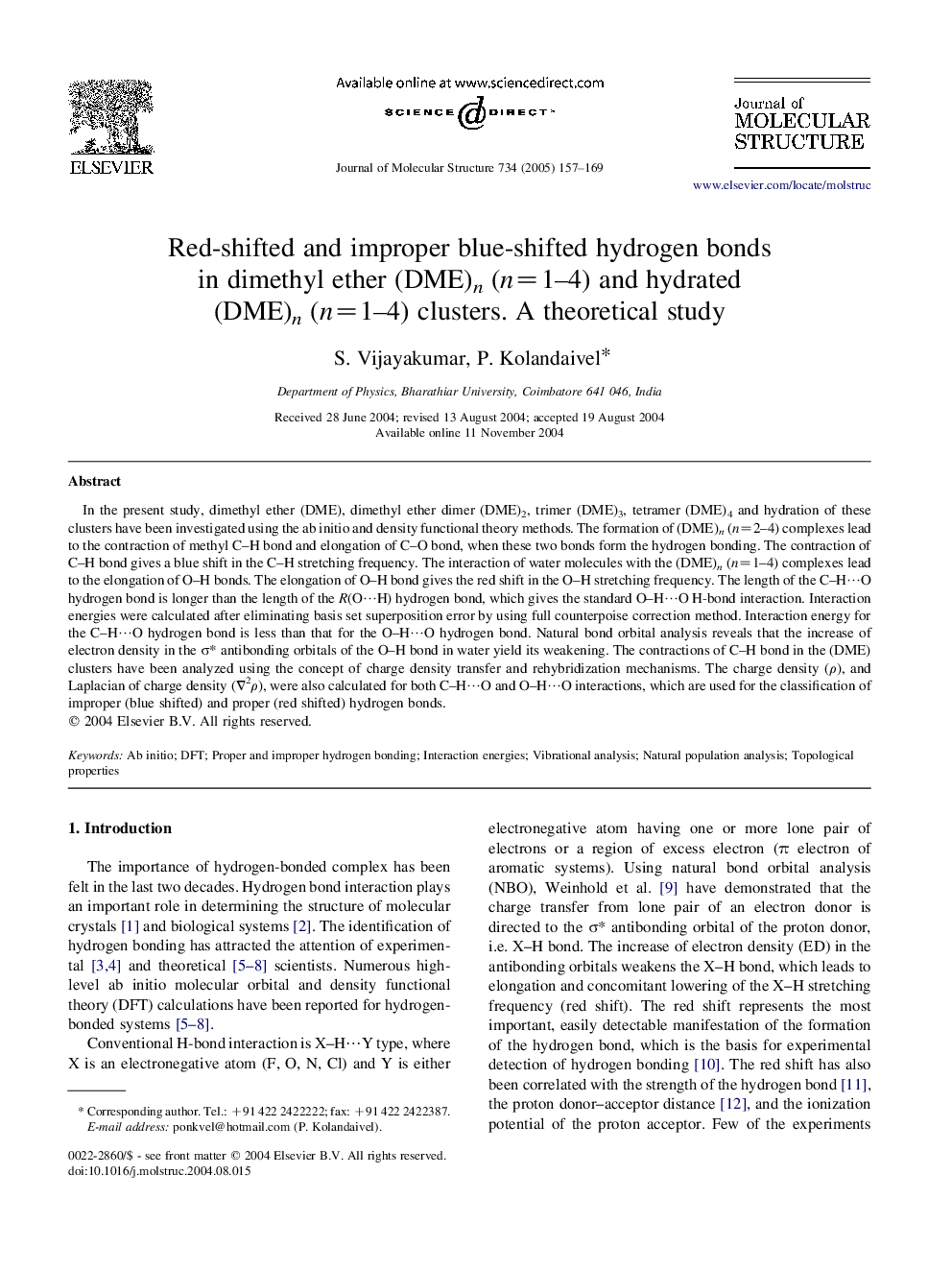| Article ID | Journal | Published Year | Pages | File Type |
|---|---|---|---|---|
| 9770443 | Journal of Molecular Structure | 2005 | 13 Pages |
Abstract
In the present study, dimethyl ether (DME), dimethyl ether dimer (DME)2, trimer (DME)3, tetramer (DME)4 and hydration of these clusters have been investigated using the ab initio and density functional theory methods. The formation of (DME)n (n=2-4) complexes lead to the contraction of methyl C-H bond and elongation of C-O bond, when these two bonds form the hydrogen bonding. The contraction of C-H bond gives a blue shift in the C-H stretching frequency. The interaction of water molecules with the (DME)n (n=1-4) complexes lead to the elongation of O-H bonds. The elongation of O-H bond gives the red shift in the O-H stretching frequency. The length of the C-Hâ¯O hydrogen bond is longer than the length of the R(Oâ¯H) hydrogen bond, which gives the standard O-Hâ¯O H-bond interaction. Interaction energies were calculated after eliminating basis set superposition error by using full counterpoise correction method. Interaction energy for the C-Hâ¯O hydrogen bond is less than that for the O-Hâ¯O hydrogen bond. Natural bond orbital analysis reveals that the increase of electron density in the Ï* antibonding orbitals of the O-H bond in water yield its weakening. The contractions of C-H bond in the (DME) clusters have been analyzed using the concept of charge density transfer and rehybridization mechanisms. The charge density (Ï), and Laplacian of charge density (â2Ï), were also calculated for both C-Hâ¯O and O-Hâ¯O interactions, which are used for the classification of improper (blue shifted) and proper (red shifted) hydrogen bonds.
Keywords
Related Topics
Physical Sciences and Engineering
Chemistry
Organic Chemistry
Authors
S. Vijayakumar, P. Kolandaivel,
